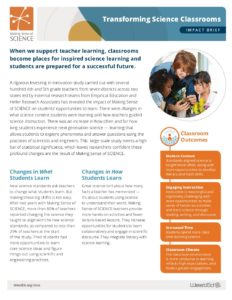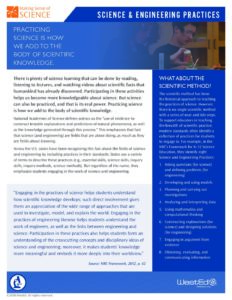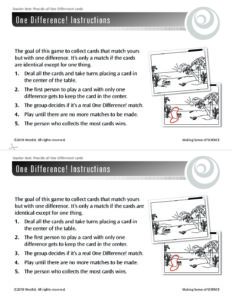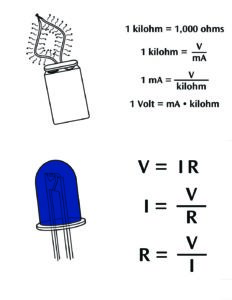January 6, 2021 • Teacher Spotlight

I have only been in the classroom for 5 years, and every year has brought new experiences and a few surprises. I’ve been in a different room, taught different classes, had a different bell schedule, and been evaluated using different processes and criteria. Needless to say, I’m used to change.
This past January, the New Mexico Public Education Department (NMPED) adopted the Next Generation Science Standards (NGSS). I was one of the teachers who had been pushing for this change, but adopting new standards is a lot of work and the timeline is very tight. By spring of 2020, we will be shifting to new NGSS-aligned assessments. Two years is not a great deal of time to overhaul the curriculum and shift gears from old ways of doing things.
The new standards seem great. There are fewer topics with greater depth, and they are less like a bullet list of facts students need to know and more of a conceptual framework for learning and understanding science. This aligns well with the way I teach and the way I think about the practice of science, but I still need to prepare. I spent most of my summer attending professional learning designed to set teachers up for success in NGSS-shifted classrooms, I trudged through the standards themselves to weed out what would be assessed and what is expected of students, and I sat down with my old materials to decide what to toss out based on what was different.
I am not the sort of teacher to use a textbook and I’ve always patched together materials and procedures from workshops, colleagues and mentor teachers, and the internet. I haven’t found a complete stand-alone curriculum that has everything, which is why I still piece together ideas from different places, but there are lots of NGSS aligned activities already out there.
- I love Edutopia and Bozeman Science for video clips and information.
- HHMI Biointeractive is a great resource for biology activities. Most activities are designed for high school, but some could be adapted for middle school.
- Teachers Pay Teachers is a fantastic marketplace for free and paid resources. I recently purchased a bundle of interactive notebook ideas from “Nitty Gritty Science” and I’m excited about using them this year.
- Ambitious Science Teaching provides a wealth of information about what good science teaching and learning looks like through a set of four core teaching practices.
- The GLOBE Program provides grade-level specific activities and investigations that cover all of Earth’s systems.
- Science Buddies is a great place to find hands-on science kits, STEM lesson plans, and lots of information about science teaching.

This process is far from over and I know I’ll be continually revising my curriculum pretty much forever, to keep up with the changes in science and pedagogy. For now, I’m excited about the change and ready to take the plunge into new waters.
This SCIENCE Corner is part of a series of NGSS-focused posts by educators and leaders in the field. This post was written by Allison Heneghan. Allison is a science and health teacher at Aldo Leopold Charter School in Silver City, New Mexico.



